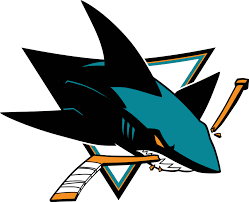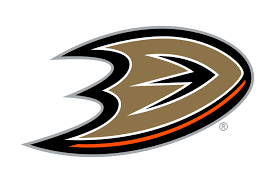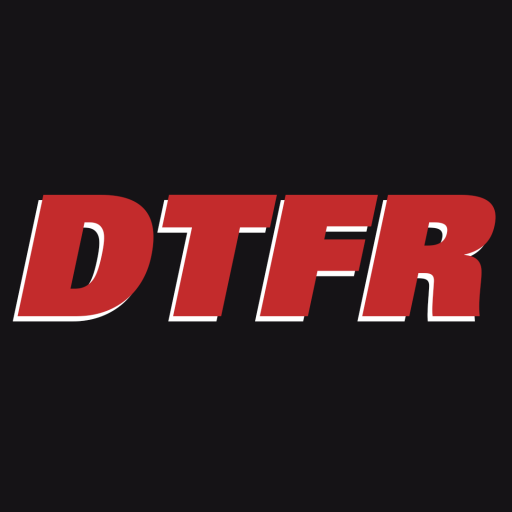As the entire hockey world awaits training camp action next month, let’s make some (un)educated guesses about the upcoming season that will totally pan out because everything always goes as expected. (It doesn’t.)
The projected standings below are only a forecast.
They are based on recent indications– as well as the last few seasons of stats– and cannot account for variations in roster construction (a.k.a. trades and free agency moves).
There’s a lot of variables that will turn the tables upside down, including transactions, injuries and otherwise. Anything can happen.
As always, it’s more important to remember 1) the spread and 2) the positioning.
Just how many points separate the projected division winner from the last wild card spot (the spread) and where a team is supposed to finish in the division standings (the position) can imply that things aren’t always what they seem.
A team that’s projected to win it all still has to play an 82-game regular season, qualify for the playoffs and go on to amass 16 wins in the postseason.
Projected Standings After ZERO Months
Pacific Division
- y-Vegas Golden Knights, 101 points
- x-San Jose Sharks, 100 points
- x-Anaheim Ducks, 96 points
- wc1- Calgary Flames, 93 points
- Los Angeles Kings, 89 points
- Vancouver Canucks, 83 points
- Arizona Coyotes, 78 points
- Edmonton Oilers, 77 points

Vegas Golden Knights: Pros and Cons
Despite a colossal collapse in Game 7 of their First Round matchup with the San Jose Sharks this spring, the Golden Knights are ready for what could be another deep playoff run in 2020.
A full season of Mark Stone– plus the rest of the original and supporting cast (Jonathan Marchessault, Reilly Smith, Paul Stastny, Max Pacioretty, Marc-Andre Fleury, etc.)– should provide Vegas with enough scoring power, while Nate Schmidt anchors the defense with Shea Theodore, Brayden McNabb, Jon Merrill and adopted Vegas son, Deryk Engelland.
Aside from working on the penalty kill and the peaceful transition of power from George McPhee to Kelly McCrimmon as General Manager of the organization (effective Sept. 1st), the Golden Knights have had a quiet offseason.
Sure, they traded Colin Miller to the Buffalo Sabres which hurts their blue line depth in the event of injuries, but Vegas has a few notable prospects with the Chicago Wolves (AHL) in Jake Bischoff, Nic Hague and Jimmy Schudlt that should be ready for a taste of NHL action if necessary.
Owner, Bill Foley, has his sights set on his original vision for the franchise– winning a Cup within the first three seasons of its existence.
The only downside for the Golden Knights heading into the 2019-20 season? Goaltending.
No, Fleury isn’t in decline from his status as one of the better goaltenders in the league, but his time in the crease has to be managed.
Though he was limited to 46 games in 2017-18 due to injury, Fleury amassed a 29-13-4 record with a 2.24 goals against average and a .927 save percentage. Vegas’ backup goaltender, Malcolm Subban, managed a 13-4-2 record in 22 games played that season with a 2.68 GAA and a .910 SV% in his rookie season.
Last season, Subban’s numbers took a turn for the worse.
He had an 8-10-2 record in 21 games played with a 2.93 GAA and a .902 SV%– all while Fleury was forced to carry a heavier schedule load, seeing his stat line slip to a 2.51 GAA and a .913 SV% in the process, but improving his overall record to 35-21-5 in 61 games.
Vegas added Garret Sparks, who carries a career GAA (3.09) and SV% (.898) that’s worst than Subban in six fewer games played over two full-time seasons as a backup (Sparks appeared in 37 games with Toronto, while Subban’s played in 43 with Vegas since 2017-18).
Gerard Gallant can’t rely on a fallback plan if one of them doesn’t yield a significant turnaround at this point in their careers (because there isn’t one) and he also can’t overexert Fleury in the buildup to the postseason.
This is why you can never have too many goaltenders in the system.
How would the Golden Knights fail?
If an Uber driver records their players complaining about their special teams play and/or said Uber driver can’t do a better job at not allowing four power play goals against on a five-minute major penalty kill.

San Jose Sharks: Pros and Cons
San Jose has about $4.683 million in cap space and Joe Thornton is still unsigned. Are we really ready to live in a world where Thornton isn’t on the Sharks and it’s not 1997-2005 again?
Also, Patrick Marleau is still unsigned too, but that’s besides the point– plus he spent the last two years with the Toronto Maple Leafs.
Anyway, the Sharks went all in on Erik Karlsson’s extension, shelling out $11.500 million per season for the next eight years through the 2026-27 season.
As long as Karlsson can remain healthy (and the rest of the roster for that matter, unlike in this spring’s Western Conference Final run), then San Jose’s blue line remains one of the most dynamic forces of offensive capabilities from an otherwise non-traditional source of scoring production.
Kevin Labanc is an emerging star in a Sharks uniform and will carry a bigger role this season with the departure of Joe Pavelski to the Dallas Stars via free agency.
Meanwhile, it’s officially the Logan Couture Era in Silicon Valley– if General Manager Doug Wilson is truly moving on from the days of Thornton and Marleau– with supporting roles from Tomas Hertl and Evander Kane.
While Karlsson’s cap hit tops the league on an otherwise unnerving contract if something goes wrong, Wilson managed to keep Timo Meier in teal for the next four seasons at an affordable $6.000 million cap hit.
Other than injuries, the only thing that could scare the Sharks out of the waters of contention is the inconsistency of Martin Jones and Aaron Dell in the crease.
Despite compiling 36 wins on the season in 62 games played, Jones had a career-worst GAA (2.94) and SV% (.896), while Dell also managed to have a career-worst performance as a backup with a 3.17 GAA and a .886 SV% in 25 games played (of which he won 10).
Yikes.
How would the Sharks fail?
San Jose has had everything imaginable happen to them in the postseason, so what seems irrational, inexplicable and/or unimaginable, because that’s probably how they’d lose (again).

Anaheim Ducks: Pros and Cons
The Ducks have about $8.500 million in cap space with a good mix of pending-unrestricted free agents and pending-restricted free agents next summer, which means they’ll only have more money to spend and reallocate to their better, younger players like Troy Terry and Daniel Sprong.
What’s the bad news?
It’s Anaheim. They’re suffering from buying out Corey Perry’s contract for the next four seasons ($2.625 million in 2019-20, $6.625 million in 2020-21 and $2.000 million from 2021-23), Ryan Getzlaf is signed through 2020-21 and has a no-movement clause, Ryan Kesler may never play again and is also signed through 2021-22 with a no-movement clause and finally, Adam Henrique has a modified no-trade clause and is signed through 2023-24.
Yes, Kesler can be place on long-term injured reserve and shelved for the remainder of his contract and/or traded elsewhere (after waiving his NMC) to free up cap space if he truly cannot return, but the fact of the matter is the Ducks are still too tied up to takeoff and fly.
The depth of prospects is sketchy with the Ducks, considering not much is known about their overall plan.
Are they overcooking some prospects for a better immediate impact in the NHL or should they just play the kids, wait around near the basement of the standings and rebuild?
Though this forecast has Anaheim tabbed for a divisional spot, they’re likely to be looking from outside the division with perhaps only the saving grace of a wild card spot thanks to John Gibson’s existence as one of the best goaltenders in the game (until the skaters in front of him let him down).
At the very least, Dallas Eakins is back as a head coach in the NHL, so all is right with the world (and he did a decent job resurrecting his career with a strong performance in San Diego (AHL) after his dismal days in Edmonton).
How would the Ducks fail?
General Manager Bob Murray holds onto his cards for too long, talent development stalls and/or Eakins turns out to not be one of those classic examples of a coach that just came into the league a little too early, then got a second chance and succeeded.

Calgary Flames: Pros and Cons
The Flames couldn’t win the Cup with two-time All Star goaltender, Mike Smith, on their roster, so they rolling with David Rittich and Cam Talbot– who joins Calgary from their intra-province rival Edmonton Oilers.
Speaking of the Oilers, that’s where Smith ended up. Goalie swap! But without any actual trading involved, since Talbot was most recently serving as a “Plan C” for the Philadelphia Flyers if Carter Hart, Brian Elliott and Co. weren’t ready to go down the stretch.
Anyway, back to the “C of Red”.
Calgary sent James Neal to Edmonton in exchange for Milan Lucic and ended up saving $500,000 per season for the remainder of Lucic’s contract (signed through 2022-23) in the process. The Oilers retained salary in the trade. You heard that right.
Matthew Tkachuk and Andrew Mangiapane are still unsigned RFAs and General Manager Brad Treliving has about $7.757 million to work with in cap space.
Get a deal done with Tkachuk and the Flames will go on without any interruption as a team that pleasantly turned a lot of heads in the regular season last year, then sputtered out in the First Round in five games to the Colorado Avalanche.
Bill Peters is ready for his second season behind the bench in Calgary and the roster looks set to remain in contention for a divisional berth, if not leading the Western Conference once again.
How would the Flames fail?
Simply put, if they flame out at the end of the regular season like they did last season– March was a bad month, which led to their demise in five games against Colorado in the First Round.

Los Angeles Kings: Pros and Cons
The good news for the Kings? Tyler Toffoli, Trevor Lewis, Kyle Clifford, Mario Kempe, Derek Forbort, Paul LaDue, Joakim Ryan and Jack Campbell are all pending-UFAs after next season and Carl Grundstrom, Austin Wagner, Sean Walker and Kurtis MacDermid are all pending-RFAs.
The bad news? Drew Doughty is signed through 2026-27 at $11.000 million per season, Anze Kopitar is making $10.000 million per season through 2023-24 and Adrian Kempe is currently an unsigned RFA.
General Manager Rob Blake has a lot to sort through this season, but he’s already made some corrections to his blunders in his first two seasons as an NHL GM.
For starters, he replaced Dion Phaneuf with Ryan in free agency, brought back his stable backup goaltender in Campbell on a one-year deal and didn’t give up on Ilya Kovalchuk, but rather hired an actual NHL head coach fit for the contemporary game in Todd McLellan.
Though Marco Sturm remains one of the best looking assistant coaches in the league, we’ll let this one slide, Los Angeles.
Are the Kings actually that much better than they were last season? Time will surely tell, but one thing’s for sure– they can’t possibly be much worse, right? Right!?!
If anything, the Kings are a wild card team at best or situated behind either Vancouver or Arizona at worst in the standings, but they should be lightyears from the basement in the division this season with some solid additions through the draft over the years in Alex Turcotte, Jaret Anderson-Dolan and Gabriel Vilardi.
Los Angeles should be able to (somewhat) bounce back from their regression last season, but at the same time, the year isn’t 2012 or 2014 anymore. It’s time to start cutting the chord with former “glue guys” turned placeholders on a roster that needs an influx of youth sooner rather than later.
How would the Kings fail?
If Jonathan Quick gets hurt in any fashion and Blake can’t get rid of at least one of the eight players on the 23-player roster over aged 30 or older.

Vancouver Canucks: Pros and Cons
The Canucks are looking to make it back into the Stanley Cup Playoffs for the first time since 2015, but did General Manager, Jim Benning do enough this offseason to set Vancouver back on the right track for 2020?
Benning went out and acquired J.T. Miller from the Tampa Bay Lightning in exchange for Marek Mazanec, a 2019 3rd round pick and a conditional 2020 1st round pick in June, then signed 29-year-old defender, Tyler Myers to a five-year, $30.000 million contract.
Miller and Myers are two quality assets compared to previous transactions made in the offseason by the Canucks. For once, Benning didn’t overpay an aging veteran player, but he also hasn’t cleaned up what might be a costly (both in price and on ice) fourth line in a league that runs four lines deep.
There’s a very real chance that none of the players on Vancouver’s fourth line any given night are making less than $3.000 million per season.
That’s unfathomable in a salary cap driven sport and only speaks to the number of misguided happenings in asset management by the Canucks.
Come to think of it, Vancouver only has five players out of a possible 23-player roster making less than $1.000 million per season. Sure, nobody’s making $10.000 million, but all those $2.000 million-plus, $3.000 million-plus, $4.000 million-plus and $5.000 million-plus contracts add up.
At least Elias Pettersson, Bo Horvat and Brock Boeser are worth watching night-in and night-out. Plus, Thatcher Demko should pan out to be one of the league’s better goaltenders.
There’s just one concern for Benning as the offseason continues– Boeser and Nikolay Goldobin are still unsigned RFAs.
And Boeser is certainly worth the four-year, $7.000 million cap hit he’s looking for. Too bad the Canucks only have $5.058 million in cap space though.
How would the Canucks fail?
By being close, but not close enough in yet another race for the playoffs. Things are heading in the right direction, however.

Arizona Coyotes: Pros and Cons
Mastermind GM John Chayka has landed this offseason’s biggest prize in a trade with the Pittsburgh Penguins– two-time Stanley Cup champion, Team USA representative and hot dog enthusiast, Phil “The Thrill” Kessel.
Kessel brings his goalscoring prowess to the Western Conference for the first time in his career, having been drafted by the Boston Bruins 5th overall in the 2006 NHL draft, then playing with Boston until being traded to the Toronto Maple Leafs in 2009 and then again the Pittsburgh in 2015.
No. 81 had 82 points in 82 games played last season, which was down from career-high 34-58–92 totals in 2017-18. Additionally, he hasn’t missed a game since 2010.
Along with Carl Soderberg– another offseason acquisition in a trade with the Colorado Avalanche– Kessel and the Coyotes are revamped and poised to make a run for the postseason.
Arizona’s only ranked low in this forecast because of nearly a decade of middle of the road rosters and missed opportunities since losing in the 2012 Western Conference Final in five games to Los Angeles.
The Coyotes haven’t been back to the playoffs since, but they’re trending upward.
With Nick Schmaltz, Jakob Chychrun and Oliver Ekman-Larsson locked up on long-term contracts, the core has really come into fruition while Chayka remains active in the draft and trade market.
Now they just need a little luck on their side to avoid losing Antti Raanta to the injury bug again.
How would the Coyotes fail?
If this forecast actually turns out to be true and Arizona finished 7th in the division, because otherwise who would actually want to see them fail?

Edmonton Oilers: Pros and Cons
Pro: New GM (Ken Holland) and a new head coach (Dave Tippett).
Con: Another new GM and a new head coach.
Pro: Connor McDavid!
Con: Plays for the Oilers.
Pro: They were able to trade Milan Lucic.
Con: While acquiring James Neal and retaining part of Lucic’s salary in the process, thereby spending more money than in the first place.
Pro: They should actually be better this year.
Con: We keep saying every year, even about a team that has the second-greatest player in the game behind Sidney Crosby on the roster.
Pro: There’s a lot of pending UFAs and RFAs on the roster.
Con: That means at least half of them are now going to have a career-year in a contract year and be overpaid either by Edmonton or other teams in the next offseason.
Pro: Two-time All Star Mike Smith signed a one-year deal to backup Mikko Koskinen.
Con: The average age of Edmonton’s goaltending duo is 34.
How would the Oilers fail?
How there’s any such thing as optimism besides having McDavid and Leon Draisaitl in Edmonton is incredible. If they make it to a wild card berth, it’d take McDavid playing every position, probably.
